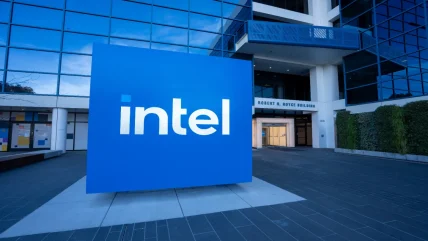
Intel’s CEO, Pat Gelsinger, alongside key executives, is anticipated to present a new strategic plan for the company to its board of directors later this month. According to Reuters, the plan is expected to involve divesting non-essential business units and revising capital expenditure in an effort to restore the chipmaker’s former dominance.
Central to the plan is a strategy to reduce overall costs by selling businesses that Intel can no longer sustain from its diminishing profits, including the programmable chip unit, Altera. Intel acquired Altera in 2015 for $16.7bn. Gelsinger and other senior executives are scheduled to present the proposal at a board meeting in mid-September, a source indicated.
A plan for Intel
The proposal, as it stands, does not include plans to separate Intel’s contract manufacturing operation, or foundry, from the company. It also does not include plans to sell it to another entity, such as Taiwan Semiconductor Manufacturing (TSMC), sources told Reuters.
The presentation, including details concerning Intel’s manufacturing operations, is still under review and could be revised before the meeting. Intel has already separated its foundry business from its design business, reporting its financial results independently since the first quarter of this year. The company has also implemented measures to ensure that the design and manufacturing divisions operate independently, thereby safeguarding the proprietary technology of customers using Intel’s fabs.
The chipmaker is currently enduring one of its most challenging periods as it struggles to regain its footing in the AI sector, trailing behind competitors such as Nvidia, whose market capitalisation has soared to $3 trillion. In contrast, Intel’s market capitalisation has plummeted to below $100bn following a disappointing second-quarter earnings report in August.
The proposal that Gelsinger and his team will present is likely to include further reductions in capital expenditure for factory expansion. The plan may involve pausing or cancelling a $32bn factory project in Germany. Last month, Intel announced plans to reduce capital expenditure to $21.5bn in 2025, marking a 17% decrease from this year, and issued a weaker-than-expected forecast for the third quarter.
In parallel with the executive plans, Intel has engaged Morgan Stanley and Goldman Sachs to advise the board on which business units to sell and which to retain, according to two sources familiar with the advisory arrangements. While Intel has not yet solicited bids for its product units, it is expected to do so once the board approves a plan.
Poor results for the once-mighty chip giant
Intel’s second-quarter report in August 2024 was notably poor, leading to a suspension of dividend payments and a 15% reduction in staff, aimed at saving $10bn. The company reported a loss of $1.65bn in Q2 2024, compared to net income of $1.47bn in the same quarter of the previous year.
Its net revenue in the second quarter ended 29 June 2024 was $12.83bn, a decrease of 1% compared to $12.95 in the corresponding quarter of 2023.
Intel has already initiated steps to spin off Altera as a separate, wholly-owned subsidiary and has indicated plans to sell a portion of its stake through an initial public offering, though no date has been set. However, the company is also exploring the possibility of selling Altera entirely to another chipmaker, with infrastructure chipmaker Marvell being a potential buyer, according to sources familiar with the matter.
Bloomberg previously reported on various options for Intel, including a potential split between its product design and manufacturing businesses, which is expected to be discussed at the forthcoming board meeting.
Last month, Intel divested its 1.18 million share stake in UK-based semiconductor and software design company Arm. This move was part of Intel’s broader restructuring efforts to improve its financial health and operational efficiency amid increasing competition in the semiconductor industry.
Written by Refna Tharayil






